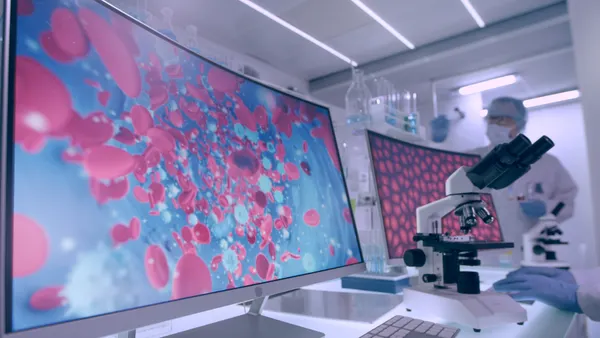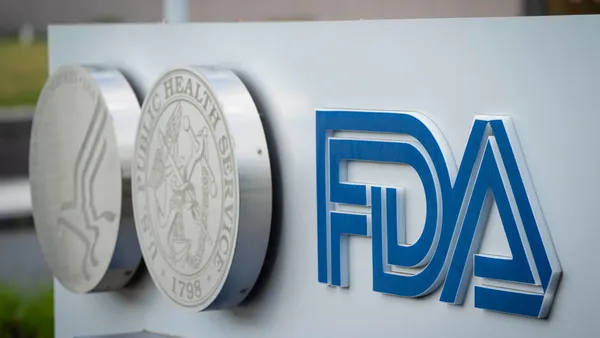Translational Research: Making the Transition from R to D There is a growing interest in translational research, which aims to bridge the gap between advances in basic research and the development of safe and effective therapies. June 2005 PharmaVOICE Despite increased investment in research and development and new technologies that have created novel targets, fewer compounds are reaching regulatory authorities and more products are failing while in development. The situation is creating concern not only at companies but with regulators. As part of its Critical Path Initiative, the Food and Drug Administration has raised concern that many of the new basic science discoveries made in recent years may not quickly yield more effective, more affordable, and safe medical products for patients. In the FDA’s view, the applied sciences needed for medical product development have not kept pace with the tremendous advances in the basic sciences. The result is a technology disconnect between discoveries and treatments that are safe and effective. Because of this, there is growing interest by pharma for translational research, which aims to be a bidirectional bridge between basic research and clinical trials. According to some experts, the value of translational research can be determined by how well a drug’s physiological effects can be mapped and the likelihood that it will be successful in clinical trials. Defining Translational Research The National Institutes of Health (NIH) has defined translational research as the process of applying ideas, insights, and discoveries generated through basic scientific inquiry to the treatment or prevention of human disease. NIH researchers have created roadmap initiatives for areas of research that hold major opportunities for advancing medicine. “The concept of translational medicine was initially adopted in academic institutions about a decade ago and only more recently has been adopted by the pharmaceutical industry,” says Orest Hurko, M.D., assistant VP of translational research at Wyeth Pharmaceuticals. “But it has different meanings in these two settings. Translational medicine broadly refers to discoveries at the bench being brought to the bedside and vice versa. In industry, it has come to have a more restricted meaning, focusing on development of biomarkers and demonstration of efficacy in early development.” Because of this, most bench researchers don’t have a good understanding of what the problems are on the clinical side, says Michael Liebman, Ph.D., chief scientific officer at Windber Research Institute. “Bench researchers frequently solve problems or do research that doesn’t have an immediate need in medicine,” Dr. Liebman says. “This can be very frustrating for people in the research community when what they are doing isn’t converted into something of clinical utility. But part of the problem is they don’t start off with an understanding of what the real clinical issues are.” He says to overcome this disconnect, translational research needs to be thought of as a two-way process. “It is just as important to go from the bedside back to the bench as it is to go from the bench to the bedside,” Dr. Liebman says. What is needed, he says, is more targeted basic research. “This means knowing what the endpoint is and how the research will be used immediately, as opposed to presupposing that a gene or pathway is the target when a pathway may be used by multiple biological systems,” he says. “When I was in academia, I would frequently have discussions with people who thought they had new targets. I would explain to them that they may have something that is valuable but they had not validated it in terms of what pharma has to do before that target can be taken forward to make a product. There is a gap in understanding. Pharma evaluates the research as being 10% or 15% of the way to a product; academics think they are 95% of the way there.” Gregory I. Berk, M.D., VP and chief medical officer at Hana Biosciences Inc., says many researchers and their institutions focus on discovery research, which means they target validation and lead optimization. “Academia does a great job of developing leads,” Dr. Berk says. “They are not, by and large, built for translational development, which transforms leads into drugs for clinical development and commercialization.” He says Hana Biosciences’ model is filling the void between leads into drugs. “Large biopharmaceutical companies primarily license technologies to accelerate basic research efforts or wait for proof-of-principle clinical studies before in-licensing products,” Dr. Berk says. “Having said that, a successful example of this approach was Novartis’ Gleevec. Brian Drucker first postulated that the bcl-abl tyrosine kinase, which is uniquely expressed in CML, would be an ideal drug target. Novartis ultimately identified an inhibitor of this kinase, which became Gleevec. This is the model that every company would like to use because it was so successful.” The Importance of Translational Research There are more novel compounds in development, and technical advances have allowed for more targets to be available to researchers. “In the last decade, there has been increased productivity in discovery,” Dr. Hurko says. “Thanks to the sequencing of the human genome, we now know of potentially tens of thousands of drug targets. Most of these targets have never been tried in people. With high-throughput screening and combinatorial chemistry, discovery is no longer rate-limiting. But we do not know how drugs directed against these novel targets will perform in human disease. Ten years ago, most of the pipeline was directed against proven targets for a subset of human diseases with which we were very familiar. There was an established road map for development and registration.” Back then, there was much less need for translational activity, Dr. Hurko continues. “We pretty much knew what to do, how to measure the effect, how to organize the early development and the pivotal studies, and what to put in the registration dossier to bring a product to market. The major issue was to do this as quickly as possible.” In contrast, many of the newer targets being advanced today haven’t been proven in humans, Dr. Hurko says. “We know that these compounds work beautifully in laboratory animals, but we don’t know if they will work in humans,” he says. “That provides a real challenge. There is a lot more risk and uncertainty. Firstly, we don’t always know which patients are most likely to benefit. Secondly, we don’t know optimal dosing that will ensure that the novel drug hits the target appropriately. Thirdly, even if the drug is dosed appropriately and given to the right patients, we often can’t find out if the drug actually is having a beneficial effect until we treat many patients for a long time.” A key reason for the focus on translational research is the high failure rate in the development of products. According to the FDA, of 100 drugs for which investigational new drug applications are submitted to the agency, about 70% will successfully complete Phase I testing and go on to Phase II; about 33% of the original 100 will complete Phase II and go on to Phase III; between 25% and 30% of the original 100 will clear Phase III; and about 20% on average will ultimately be approved for marketing. At the same time, applications to the FDA are declining (see chart on page 30) and research budgets are increasing. Member companies of the Pharmaceutical Research and Manufacturers of America (PhRMA) invested $38.8 billion in research and development on medicines in 2004, a 12.6% increase from $34.5 billion in 2003. This tops a steady increase — four-and-a-half times the investment — in R&D over more than two decades, from an estimated investment of $2 billion in 1980. The high failure rate of compounds in the clinic is related to the fact that many of them are inhibiting novel targets, says Mark Murcko, Ph.D., VP and chief technology officer at Vertex Pharmaceuticals Inc. “Many times, a drug company has a compound with good ADME properties, tox properties, and human blood levels in a Phase I clinical trial,” he says. “Then when it’s taken into a Phase II proof-of-concept study it doesn’t work. That’s because these targets are novel. When we make good molecules against targets that are really speculative, in some cases the compounds fail to show any clinical benefit.” Dr. Murcko says there often isn’t a clear understanding of the link between a biochemical target and the normal biological pathway that the target is involved with and the diseases that can result when those pathways are not performing in the usual ways. “It is difficult to make a molecule that has a certain set of properties,” he says. “The translation from basic research into effective therapy has to include an understanding of what the target is all about, how that target functions in the normal healthy individual, and how that target functions differently in a person who is suffering a disease. It is that link that is the most challenging.” Dr. Murcko says translational research should be aimed at understanding not just the target, but the molecule and whether the compound has any type of a safety liability. “We have to know that the drug is able to inhibit its target or the clinical results can’t be interpreted,” says Julie Cherrington, Ph.D., executive VP of research and development at Phenomix Corp. “With the sequencing of the human genome, we have more targets, and we have more approaches to figure out what the targets are, but there is still a gap in identifying what the best targets are.” At Phenomix, the use of in vivo systems throughout the discovery and development process narrows that gap and contributes to clinical successes. Dr. Cherrington says the fundamental key in making progress in translational medicine is strengthening the tie between preclinical and clinical sciences and recognizing that there has to be a continuum from target identification and validation through registration, which is required to achieve significant therapeutic breakthroughs. Industry experts say translating research into products is a challenge in all therapeutic areas, but there are some areas in which this is even more of an issue, such as the neurosciences. “The relationship between an animal model and the actual human disease can be very tenuous,” Dr. Hurko says. “For example, there are existing animal models for schizophrenia or depression but these are based on types of targets that we are already knew about. It’s hard to know if these old models will predict efficacy for drugs based on a completely novel mechanism.” Oncology is another major challenge for translational research. “Xenographs of human tumors are implanted into animals and used to test these novel targets,” Dr. Hurko says. “But, sadly, there is surprisingly little correlation between efficacy in those models and in an actual human tumor.” Biomarkers and rapid translational readouts especially are needed for chronic diseases. Rapidly active drugs can be assessed adequately with standard endpoints, he says. “For example, for an acute pain compound, a couple of hours after dosing, the patient will be able to say whether the pain has lessened,” Dr. Hurko says. “In contrast for longer-term diseases, such as degenerative diseases in the brain and tumors, clinical endpoints may require months or years.” Bridging the Gap The National Institutes of Health is leading an effort to better bridge the gap between preclinical and clinical. As part of NIH’s Re-Engineering the Clinical Research Enterprise initiatives, two projects have been developed. The first is the Regional Translational Research Centers. Key to building a strong infrastructure is increasing interactions between basic and clinical scientists. Another initiative is NIH’s Rapid Access to Interventional Development pilot program, which aims to use public resources to bridge the gap between discovery and clinical testing, especially for high-risk ideas or therapies for uncommon disorders that frequently do not attract private-sector investment. Dr. Hurko says for biomarker strategies to work optimally, pharma companies may sometimes benefit from precompetitive collaborations with academic and government research groups. “My view is that all of us need to work more efficiently in our areas of expertise,” he says. “Ideally, each of these institutions should concentrate on their strengths and then collaborate where we can to complement each other.” Dr. Hurko says it is interesting that pharma companies have taken institutionally different approaches to translational medicine. “For example, one company reported that it had included translational medicine concepts into every part of the organization,” he says. “Others have created a separate stand-alone department between discovery and development. Wyeth believes the real issue is bridging the gap between discovery and development. For that reason, Wyeth has not made it a stand-alone department. “Translational research reports through discovery, and translational development reports through the development line,” he says. “This structure lets the same people share the responsibility for translational activities beginning several years before a compound comes to man and continuing up to demonstration of efficacy in man.” Dr. Liebman says it’s also important for pharma companies to participate or provide forums to academics to educate them on the development process. “If the pharma industry wants to get better products out of academic institutions, companies need to communicate what a validated target is,” he says. One way to foster this communication, according to Prof. Patrick Nef, Ph.D., CEO of Faust Pharmaceuticals, is to encourage all forms of exchange between academic laboratories, pharmaceutical, and biotechnology companies. “With this exchange, innovation is likely to be created from a pool of different ideas,” he says. “In the past, people were bound for a lifetime to a company and had a single type of work. If there was a strategy that encouraged people to move from one discipline to another or one company type to another, I think it would create greater awareness of what is needed and what is missing.” PharmaVOICE welcomes comments about this article. E-mail us at [email protected]. By Denise Myshko Translational research Dr. Michael Liebman Translational Research needs to be thought of as a two-way process. It’s just as important to go from the bedside back to the bench as it is to go from the bench to the bedside. Dr. Mark Murcko In many cases, we don’t have a clear understanding of the linkage between a biochemical target and downstream events. It is the link from target to pathway to disease to patient that we find challenging. Dr. Orest Hurko The focus is to try to separate the wheat from the chaff and identify for the R&D organization the compounds that we think are going to be most likely to prove effective in long-term studies in humans. Merging Research and Development Will Help Establish Proof of Concept as Early as Possible This approach keeps the focus on the patient: • Creates a balanced pipeline built on a strategic view of the future that focuses on breakthrough therapies. • Implements an R&D strategy that allows for innovation, efficiencies, and diversification. • Leverages new technologies to capitalize on genomic revolution and progress in science. • Organizes the company around technology and business strategy. This view changes the definition of blockbuster to be more science driven, focusing on: • Better drugs for higher-sever ty, lower-prevalence diseases. • Degree of therapeutic advantage. • Empty space in discovery, trials, and marketing. Source: Impact Report January/February 2005, Tufts Center for the Study of Drug Development, Boston. For more information, visit csdd.tufts.edu. Dr. Gregory Berk The scientists who do the basic research and discover the pathways and targets typically have no idea what is involved to take a target and turn it into a drug. 10-year Trend in FDA Submissions Source: Pharmaceutical R&D Statistical Sourcebook, 2004, Parexel International, Waltham, Mass. For more information, visit parexel.com. NDA SUBMISSIONS 1993 1994 1995 1996 1997 1998 1999 2000 2001 2002 2003 Year 150 140 130 120 110 100 90 80 70 60 50 40 30 20 10 Dr. Julie Cherrington One of the barriers to developing therapies is translating the knowledge from the bench to the clinic and knowing the right questions to ask in the clinic as early as possible in the drug discovery and development process. Prof. Patrick Nef The models we use in preclinical research rarely mimic what is going to happen in human Patients. There is a big knowledge gap between what we can predict in preclinical research and what is observed in clinical studies. The big challenge is basic research. Experts on this topicGregory I. Berk, M.D. VP and Chief Medical Officer, Hana Biosciences Inc., South San Francisco, Calif.; Hana Biosciences is a biopharmaceutical company that acquires, develops, and commercializes innovative products to advance cancer care. For more information, visit hanabiosciences.com. Julie Cherrington, Ph.D. Executive VP, Research and Development, Phenomix Corp., San Diego; Phenomix is a drug discovery and development company with a portfolio of therapeutic programs under way in immune disease and metabolic disease. For more information, visit phenomixcorp.com. Orest Hurko, M.D. Assistant VP, Translational Research, Wyeth Pharmaceuticals, Madison, N.J.; Wyeth Pharmaceuticals, a division of Wyeth, has leading products in the areas of women’s healthcare, cardiovascular disease, central nervous system, inflammation, transplantation, hemophilia, oncology, vaccines, and nutritional products. For more information, visit wyeth.com. Michael Liebman, Ph.D. Chief Scientific Officer, Windber Research Institute, Windber, Pa.; Windber Research Institute is an integrated clinical, genomic, and proteomic research facility. For more information, visit wriwindber.org. Mark Murcko, Ph.D. VP and Chief Technology Officer, Vertex Pharmaceuticals Inc., Cambridge, Mass.; Vertex is a global biotechnology company committed to the discovery and development of breakthrough small-molecule drugs for serious diseases. For more information, visit vrtx.com. Prof. Patrick Nef, Ph.D. CEO, Faust Pharmaceuticals, Strasbourg (France) and Geneva (Switzerland); Faust Pharmaceuticals is a biotech company dedicated to the discovery and development of innovative proprietary drugs for CNS diseases. For more information, visit faustpharma.com.
An article from


Translational Research: Making the Transition from R to D
Filed Under:
Research & Development










